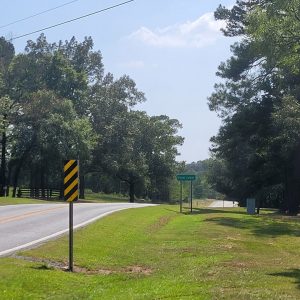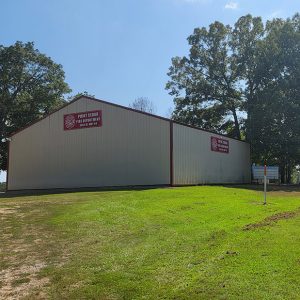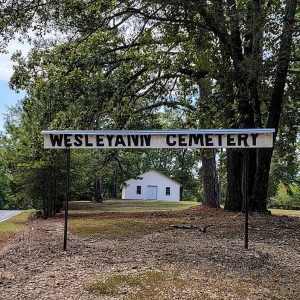calsfoundation@cals.org
Point Cedar (Hot Spring County)
Point Cedar is an unincorporated community located in western Hot Spring County. Located at the intersection of Arkansas Highways 84 and 347, it is about ten miles northeast of Amity (Clark County) and eight miles northwest of Bismarck (Hot Spring County).
The name of the community comes from early settlers who found a point covered with cedar trees located at the mouth of a creek emptying into the Caddo River. At the time the first settlers arrived in the area, it was part of Clark County. The establishment of a post office led to the adoption of Cedar Point as the name of the community, but it was discovered that another Cedar Point existed, leading to the shift of the name to Point Cedar. The post office opened in 1852 and closed in 1959, with service being transferred to Amity and Bismarck; eventually, the Bismarck post office began serving the entire community.
Early settlers in the area included Thomas Evans, who acquired a land grant of forty acres in 1855. In 1860, Lambert Berry obtained more than 180 acres in the area. Most of the families in the area engaged in small-scale farming in the mountainous region. More settlers arrived in the community after the Civil War. In 1873, Hot Spring County was extended to the west, and the Point Cedar community became part of that county.
The Point Cedar United Methodist Church was organized at an unknown date before 1865. Originally established near a cemetery now known as the Wesleyan Cemetery, services were held in a log cabin until 1866, when the congregation moved to another location about three miles south. In 1869, it moved back to its original location and made one final move in 1902 to its current location, about one and a half miles east of the cemetery. The current church was rebuilt in 1954 with an addition in 1982. The church is no longer active.
Another cemetery was established in 1882. The Free Hill Union Church was organized near the cemetery in 1898 when three acres of land including the cemetery were donated by Calvin Copeland. The church was organized to be used by up to four congregations, each taking one Sunday of the month. The church replaced a building that had been used as both a church and a school with a new building constructed in 1902. The church and cemetery continue to be used in the twenty first century.
In 1892, a directory of communities in Hot Spring County did not list a population for Point Cedar but did state that it contained two grist mills and two cotton gins. A school operated in the community in the late nineteenth and early twentieth centuries. Named the Mount Zion School, it used at least three buildings over the years it was in operation. Over the years, the enrollment fluctuated. A newspaper report in February 1915 stated that the enrollment at the school was quite low and that a recent vote to extend a millage to support the district did not pass. The school consolidated with the Bismarck School District in the 1944–45 academic year, although some students in the western part of the Point Cedar District transferred to Amity.
A Woodmen of the World camp operated in the community in the early twentieth century, with many Point Cedar citizens belonging to the group. The Point Cedar Masonic Lodge operated between 1873 and 1883 before moving to Friendship (Hot Spring County); however, despite its name, the lodge was located in DeRoche (Hot Spring County) and not in the Point Cedar community.
The community is known for the campground of the same name located on the shore of DeGray Lake and operated by the U.S. Army Corps of Engineers. The facility includes areas for both recreational vehicles and tent camping.
For additional information:
Bismarck High School Young Historians Society. The Bismarck Project: The History of Bismarck and Surrounding Areas of Antioch, Beaton, Caney, DeRoche, Jack Mountain, Marcus, New DeRoche, Oak Bower, & Point Cedar, More or Less. N.p.: 2015.
Blanton, Norm Knight. “Point Cedar Post Office.” The Heritage 22 (1995): 73–77.
Bremer, Joseph P. “Silver Being Mined at Point Cedar.” The Heritage 2 (1971): 24–25.
“The Campbell Family of Point Cedar, Arkansas.” The Heritage 9 (1982): 33–42.
“Point Cedar United Methodist Church.” The Heritage 11 (1984): 100–103.
David Sesser
Henderson State University
 Community Park
Community Park  Entering Point Cedar
Entering Point Cedar  Hot Spring County Map
Hot Spring County Map  Point Cedar Fire Deparement
Point Cedar Fire Deparement  Point Cedar Street Scene
Point Cedar Street Scene  Wesleyann Cemetery
Wesleyann Cemetery  Wesleyann Cemetery
Wesleyann Cemetery 



Comments
No comments on this entry yet.